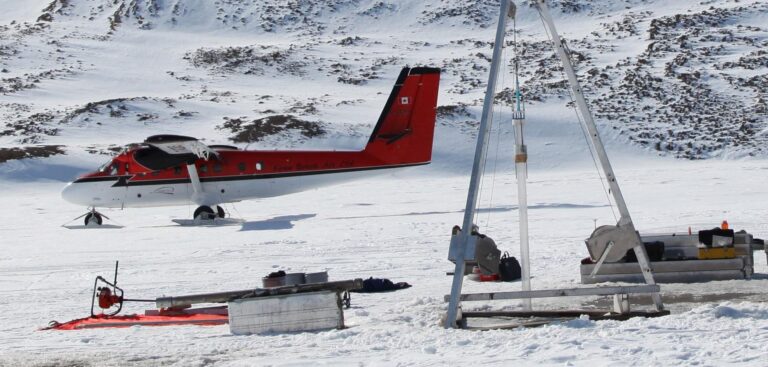By taking advantage of unique properties of sediments from the bottom of Sawtooth Lake in the Canadian High Arctic, climate scientists have been able to extend the record of Atlantic sea-surface temperature from about 100 to 2,900 years, and it shows that the warmest interval over this period has been the past 10 years.
A team led by Francois Lapointe and Raymond Bradley from the Climate System Research Center of the University of Massachusetts Amherst and Pierre Francus at the University of Québec-INRS, analyzed what they termed “perfectly preserved” annual layers of sediment. These had accumulated in the lake on northern Ellesmere Island, Nunavut, and contain titanium left over from centuries of rock weathering. By measuring the titanium concentration in the different layers, they were able to estimate the relative temperature and atmospheric pressure over time.
The newly extended record indicates that the coldest temperatures were found between about 1400-1600AD, and the warmest interval occurred during the past decade. Francus noted, “Our unique data set constitutes the first reconstruction of Atlantic sea surface temperatures spanning the last 3,000 years and this will allow climatologists to better understand the mechanisms behind long-term changes in the behavior of the Atlantic Ocean.”
The authors note that when temperatures are cool over the North Atlantic, a relatively low atmospheric pressure pattern is found over much of the Canadian High Arctic and Greenland. This is associated with slower snow melt in that region and higher titanium levels in the sediments. The opposite is true when the ocean is warmer – atmospheric pressure is higher, snow melt is rapid and the concentration of titanium decreases.
Lapointe added, “Using these strong links, it was possible to reconstruct how Atlantic sea surface temperatures have varied over the past 2,900 years, making it the longest record that is currently available.”
The researchers reported that their newly reconstructed record is significantly correlated with several other independent sediment records from the Atlantic Ocean ranging from north of Iceland to offshore Venezuela, confirming its reliability as a proxy for the long-term variability of ocean temperatures across a broad swath of the Atlantic. The record is also similar to European temperatures over the past 2,000 years, they point out.



